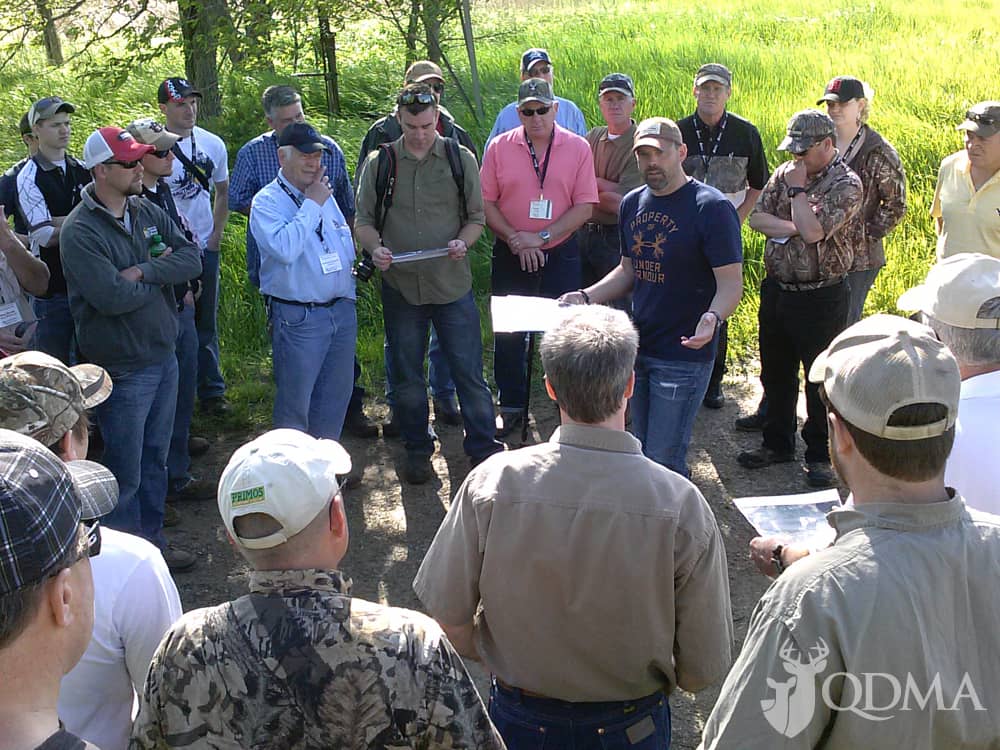Maximizing the Potential of Your Deer Hunting Land
Bernie Barringer 08.29.16

You don’t hear the word “stewardship” used much these days. It was once a cornerstone of wildlife biology, hunting and fishing. But these days, wildlife managers often seem to care as much about the opinions of the masses as they do about the proper use of our sustainable natural resources. Stewardship, according to the dictionary on my smartphone is, “Steward: A person who manages another’s property or affairs . . . stewardship is the responsibility of overseeing and protection of something considered worth caring for and preserving.”
It’s important to make the distinction that we are only caretakers of the wildlife and their habitats for a time; we will soon pass them along to future generations. So when you hear about a deer stewardship program, you may think it’s about killing more deer and bigger bucks, and that’s one of the benefits of proper land and herd management, but it’s really about much more than that.
The Quality Deer Management Association (QDMA) started the Deer Steward program 10 years ago, and nearly 2,000 hunters and land managers have gone through the multi-level course. The course trains landowners and hunters to maximize the potential of their hunting land, not just to shoot more deer and big bucks, but to improve the land so all of the wildlife benefits and future generations also reap the benefits of improved habitat.
The course takes a commitment to complete. Both level 1 and level 2 consist of a 3-day weekend of classes covering biology, ecology, forestry and wildlife management. Each course costs $800, which includes course materials, a membership and meals. Level 1 is almost entirely classroom instruction with videos and seminars by biologists, wildlife experts and college professors. On day three, attendees tour a local quality deer management property.

Topics in level 1 include whitetail behavior and biology such as movements, home ranges, communication, senses, diseases and population dynamics. Also covered are the issues of food plots, minerals, supplemental feeding, antler growth and development, survey techniques and hunter and poacher management among other things.
Level 2 takes you into the field and is mostly a hands-on learning experience on a managed property. Here you will learn such topics as identifying the property’s strengths and weaknesses, and developing a plan to improve it. It also covers food plot management, equipment, timber management and improvement, analyzing harvest data, age estimation and population dynamics. By the end of level 2, you will have the tools and knowledge to create a long-term management plan to improve your property and how to make the most of what you have available to you.

Level 3 can be reached only through long-term progress in your property improvement. Persons certified for level 3 also have to show proof of a long-term commitment to improving habitat and show that they have given back through organizations and individuals. Each level 3 applicant is analyzed on an individual basis and is largely based on personal service and merit, as well as proof of long-term positive impact on the resource.
Only level 1 is available as an online course for a reduced rate. New for the program is a series of modules that will take specific topics covered in levels 1 and 2 to a deeper level. For example, a module is now offered for predator control where much more in-depth information about predatory impact on deer herds is given, and training in trapping, snaring and coyote hunting takes place. More topics will be added to the module section in the future.
Graduates of the Deer Steward Program have the chance to get continuing education credits, and they take away a wealth of knowledge that will make them not only a better hunter, but more importantly, a well-educated property and wildlife manager. Attendees can plan and implement advanced deer management strategies where they hunt.

It’s hard to imagine a way to get more knowledge about whitetail deer, their habitat and management, and property improvement strategies in a short amount of time than this series of courses offers. Gathering this knowledge through the program takes a commitment in time and money, but the value received is priceless.
For more information about the QDMA’s Deer Steward Program, call Matt Ross at 518.391.8414 or email mross@qdma.com.

